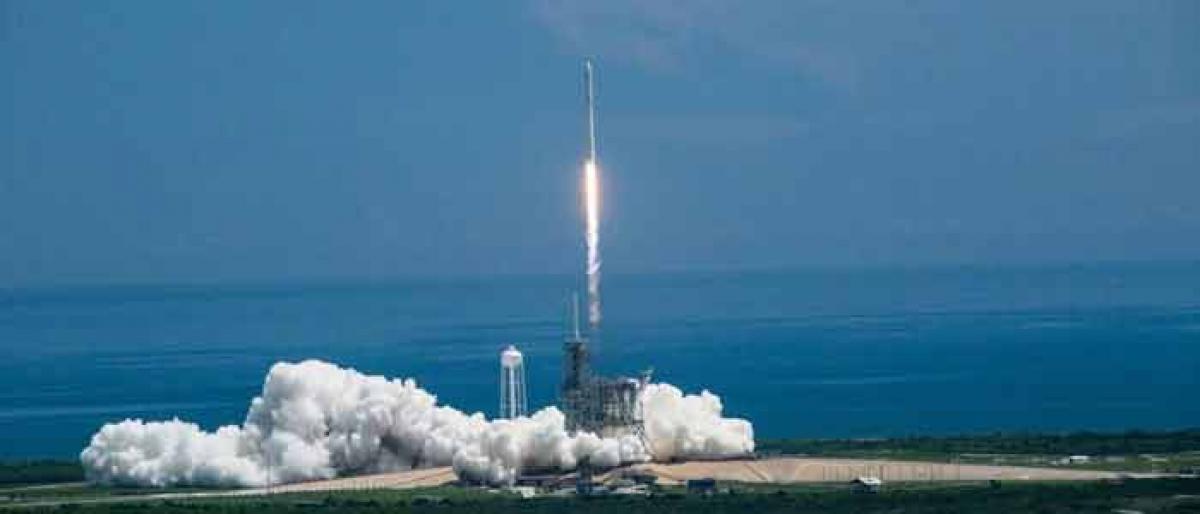Just In

Space is a fascinating realm. Incidentally, any milestone in space exploration catches the imagination of young and old alike. On Feb 6 Space X launched the world’s powerful rocket carrying a payload, the original cherry red Tesla Roadster electric car playing the “Space Oddity” destined for the red planet Mars.
Space is a fascinating realm. Incidentally, any milestone in space exploration catches the imagination of young and old alike. On Feb 6 Space X launched the world’s powerful rocket carrying a payload, the original cherry red Tesla Roadster electric car playing the “Space Oddity” destined for the red planet Mars. Unlike conventional rocket launches that carry satellites slated for different orbits or interplanetary space travel, the rocket hoisted a car driven by a mannequin ‘Star Man’ making it more special.
To brandish rocket’s incredible load carrying capacity, Space X wanted a huge payload and what best could have served its business interests other than choosing its own product. They zeroed in on the Roadster, the revolutionary electric car of Musk to promote its brand and technological proficiencies.
Falcon Heavy lifted off from the NASA’s Kennedy Space Centre Cape Canaveral, the place from where powerful Saturn V rockets for Lunar Mission 1969 took off. The third stage of Falcon blast-off over performed steering the Roadster beyond the heliocentric orbit of the Mars into the asteroid orbit.
Roadster having missed its original destination, will now orbit between Mars and Jupiter for eternity and might eventually turn into space debris. But this iconic launch Space X Falcon Heavy has created history. Till 1991, Cold War rivals the US and the Soviet Union intensely competed to showcase their dominance in every avenue and space was no exception. Their fierce competition yielded numerous scientific breakthroughs that drastically changed the contours of space exploration, which has been the exclusive domain of the governments. Now Space X’s spectacular launch potentially opened the territory of space for private companies.
The launch was phenomenal regarding technological advancement. Two of three boosters of the rockets descended majestically to the designated launch area vertically are recovered and refurbished for use in next launch. Recovery of the first stage boosters is a tremendous achievement and speaks volumes about Elon Musk’s vision of reusable rockets, which can tremendously reduce economies of scale.
Reusability of the boosters used in the Falcon Heavy that can carry a payload of 63,800kg to Low Earth Orbits (LEO) is believed to reduce the cost of launching satellites by over a quarter. Aside from cost reduction, Space X has now set the bar high for its competitors.
Space X’s incredible feat is now a renaissance of sorts for space science and exploration. Having already proven its capabilities in delivering cargoes to the International Space Station and successfully carried out 45 missions and planned 70 missions worth $10 billion. Space X Falcon 9 reusable rockets have been making significant progress in satellite launching business by reducing the cost by 30 per cent or $18.6 million with every launch. Enamored by its achievements, Space X is now working on Dragon Capsule, Falcon Heavy rocket and the BFR rocket system for its ambitious project of carrying humans to interplanetary destinations.
Musk has a special interest in red planet and Space X is geared up to send humans to Mars by 2019. Overwhelmed by the recent Falcon Heavy near flawless launch, Musk threw a gauntlet, challenging other rivals for a space race. He encouraged companies indicating that Space X, as a commercial entity managed with internal funds of $500 million and prompted billionaires to invest in Space Science.
Though the entry of private players into the arena of space science has been decades long, federal laws prevented them from launching their own satellites till 1984.
By: Ramaharitha Pusarla

© 2024 Hyderabad Media House Limited/The Hans India. All rights reserved. Powered by hocalwire.com







